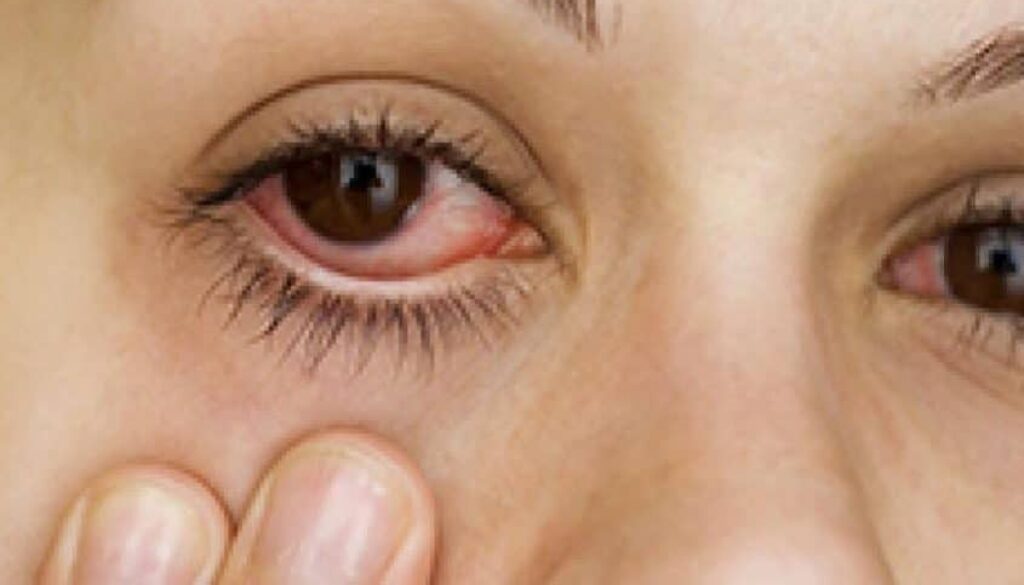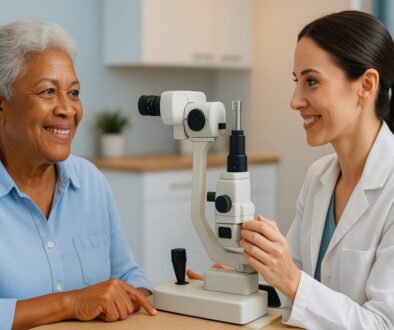Pink Eye: Symptoms, Treatments & Relief
Waking up with red, itchy eyes can be alarming. Pink eye, or conjunctivitis, affects millions of Americans yearly, spreading quickly in schools, workplaces, and homes. This guide covers everything you need to know—from identifying symptoms to finding urgent care clinics near you—so you can act fast and protect your vision.
What Is Pink Eye?
Pink eye is an inflammation of the conjunctiva, the thin tissue lining the eyelids and covering the white of the eye. It’s highly contagious and has three primary types:
-
Viral Pink Eye: Caused by viruses like adenovirus (common in colds).
-
Bacterial Pink Eye: Resulting from bacteria like Staphylococcus.
-
Allergic Pink Eye: Triggered by allergens like pollen or pet dander.
Is Pink Eye Contagious?
Viral and bacterial pink eye spread easily through direct contact, shared towels, or coughing. Allergic pink eye is not contagious. If you suspect an infection, avoid touching your eyes and wash your hands frequently.
Pink Eye Symptoms: Recognizing the Signs
Symptoms vary by type but often include:
-
Redness in one or both eyes.
-
Itching or burning sensations.
-
Watery or thick discharge (yellow/green in bacterial cases).
-
Crusting of eyelids overnight.
Pink Eye vs. Allergies: Key Differences
Allergic pink eye usually affects both eyes and comes with sneezing or a runny nose. Viral/bacterial cases often start in one eye and may include fever or swollen lymph nodes.
Home Remedies for Pink Eye Relief
Most mild cases improve with at-home care. Try these 7 safe remedies:
-
Warm Compresses: Soak a clean cloth in warm water, wring it out, and place it over closed eyes for 5–10 minutes. Reduces crusting and discomfort.
-
Artificial Tears: Over-the-counter lubricating drops flush irritants. Avoid redness-reducing drops—they can worsen symptoms.
-
Cold Compresses: For allergic pink eye, use a cold pack to reduce swelling.
-
Hygiene Practices: Wash bedding daily, avoid makeup, and never share towels.
-
Breast Milk: Some studies suggest its antibodies may help infants (apply 1–2 drops to the affected eye).
-
Honey Solution: Mix raw honey with sterile water (1:4 ratio) and apply 1 drop twice daily. Consult a doctor first.
-
Avoid Contact Lenses: Switch to glasses until symptoms resolve.
Best Over-the-Counter Eye Drops for Pink Eye
Look for preservative-free brands like Systane or Refresh Optive. For allergic cases, antihistamine drops like Zaditor provide quick relief.
Medical Treatments: When to See a Doctor
While home remedies work for mild cases, some situations require professional care.
How Long Does Pink Eye Last?
-
Viral: 7–14 days (no treatment needed).
-
Bacterial: 24–48 hours with antibiotic drops.
-
Allergic: Subsides after allergen removal or medication.
Prescription Treatments
-
Antibiotic Drops: Like Vigamox for bacterial infections.
-
Antiviral Medication: Prescribed for severe viral cases (e.g., herpes-related conjunctivitis).
-
Steroid Eye Drops: For extreme allergic reactions (use only under supervision).
Urgent Care for Pink Eye: When to Go
Visit a clinic if you experience:
-
Severe pain or light sensitivity.
-
Blurred vision that doesn’t improve.
-
Symptoms lasting over a week.
-
A weakened immune system (e.g., diabetes, HIV).
Find a Pink Eye Doctor Near You
In major U.S. cities like New York City, Los Angeles, or Chicago, urgent care clinics like CityMD or Concentra offer same-day appointments. If you are in Tamarac, FL, visit West Broward Eyecare Associates clinic for eyecare.
How can I tell if my pink eye is viral or bacterial?
Viral and bacterial conjunctivitis are often confused but require different treatments. Here’s how to distinguish them:
Causes
-
Viral: Linked to cold viruses (adenovirus). Common during flu season in states like New York or Ohio.
-
Bacterial: Caused by bacteria like Staphylococcus or Streptococcus. Spreads via contaminated surfaces (e.g., shared makeup in schools).
Symptoms
-
Viral: Watery discharge, mild itching, often affects one eye first.
-
Bacterial: Thick yellow/green discharge, crusting eyelids, usually impacting both eyes.
Treatment
-
Viral: No medication needed. Use cold compresses and artificial tears.
-
Bacterial: Requires antibiotic drops (e.g., Polytrim).
Can I buy pink eye drops?
Yes! These OTC options are FDA-approved and available at U.S. pharmacies like CVS or Rite Aid:
-
Systane Ultra Lubricant Drops: Relieves viral/allergic irritation (12–15).
-
Zaditor Antihistamine Drops: Targets allergy-related pink eye (14–18).
-
Similasan Pink Eye Relief: Homeopathic option for mild cases (9–12).
Important Notes:
-
Avoid redness relievers like Visine—they worsen inflammation.
-
Bacterial pink eye cannot be treated with OTC drops.
-
Check expiration dates: Expired drops risk contamination.
Pro Tip: Pharmacists can recommend drops for kids under 5.
Can STIs Cause Pink Eye? Understanding the Risks
Sexually transmitted infections (STIs) like chlamydia and gonorrhea can trigger severe conjunctivitis when genital fluids contact the eyes. Though less common than viral or bacterial pink eye, STI-related conjunctivitis demands urgent medical care to prevent vision-threatening complications.
3 Ways STIs Spread to the Eyes:
-
Direct contact with infected genital fluids (e.g., during sexual activity)
-
Newborn exposure during vaginal delivery (causing neonatal conjunctivitis)
-
Self-transmission via unwashed hands after genital contact
Recognizing STI Pink Eye Symptoms:
Unlike typical conjunctivitis, STI-related cases often feature:
-
Intense redness/swelling
-
Thick pus-like discharge
-
Light sensitivity and eye pain
-
Swollen eyelids
Critical Pregnancy & Newborn Risks:
Neonatal conjunctivitis from untreated maternal STIs can cause permanent vision loss or blindness in infants. All pregnant individuals should:
-
Receive routine STI screening
-
Complete the prescribed antibiotics if infected
-
Demand newborn eye prophylaxis post-delivery
Effective Treatment Protocols:
-
Oral antibiotics: Azithromycin or doxycycline
-
Prescription eye drops/ointments
-
Ophthalmologist follow-up within 48 hours
-
Mandatory partner treatment to prevent reinfection
Prevent STI Pink Eye:
-
Use condoms/dental dams during all sexual activity
-
Request STI screenings at prenatal appointments
-
Never touch your eyes before washing your hands after genital contact
-
Seek immediate care if genital STI symptoms develop
What Is Commonly Misdiagnosed as Pink Eye?
Pink eye symptoms overlap with these U.S.-prevalent conditions:
1. Dry Eye Syndrome
-
Why It’s Confused: Redness, gritty feeling.
-
Difference: No discharge. Common in arid states like Arizona or Nevada.
-
Fix: Preservative-free drops like Refresh Optive.
2. Blepharitis
-
Why It’s Confused: Crusty eyelids, irritation.
-
Difference: Chronic inflammation of eyelid glands.
-
Fix: Warm compresses and eyelid scrubs (sold at Target).
3. Uveitis
-
Why It’s Confused: Redness, light sensitivity.
-
Difference: Painful, affects inner eye layers.
-
Fix: Requires steroid drops from an ophthalmologist.
Preventing Pink Eye: Tips for Families
-
Disinfect Surfaces: Use Lysol wipes on doorknobs, phones, and keyboards.
-
Hand Hygiene: Teach kids to wash their hands for 20 seconds after school.
-
Avoid Shared Items: Pillows, makeup, and towels can harbor bacteria.
-
Manage Allergies: Keep windows closed during pollen season and use HVAC filters.
FAQs
-
The CDC recommends staying home until 24 hours after starting antibiotics (bacterial cases) or until discharge stops (viral cases).




